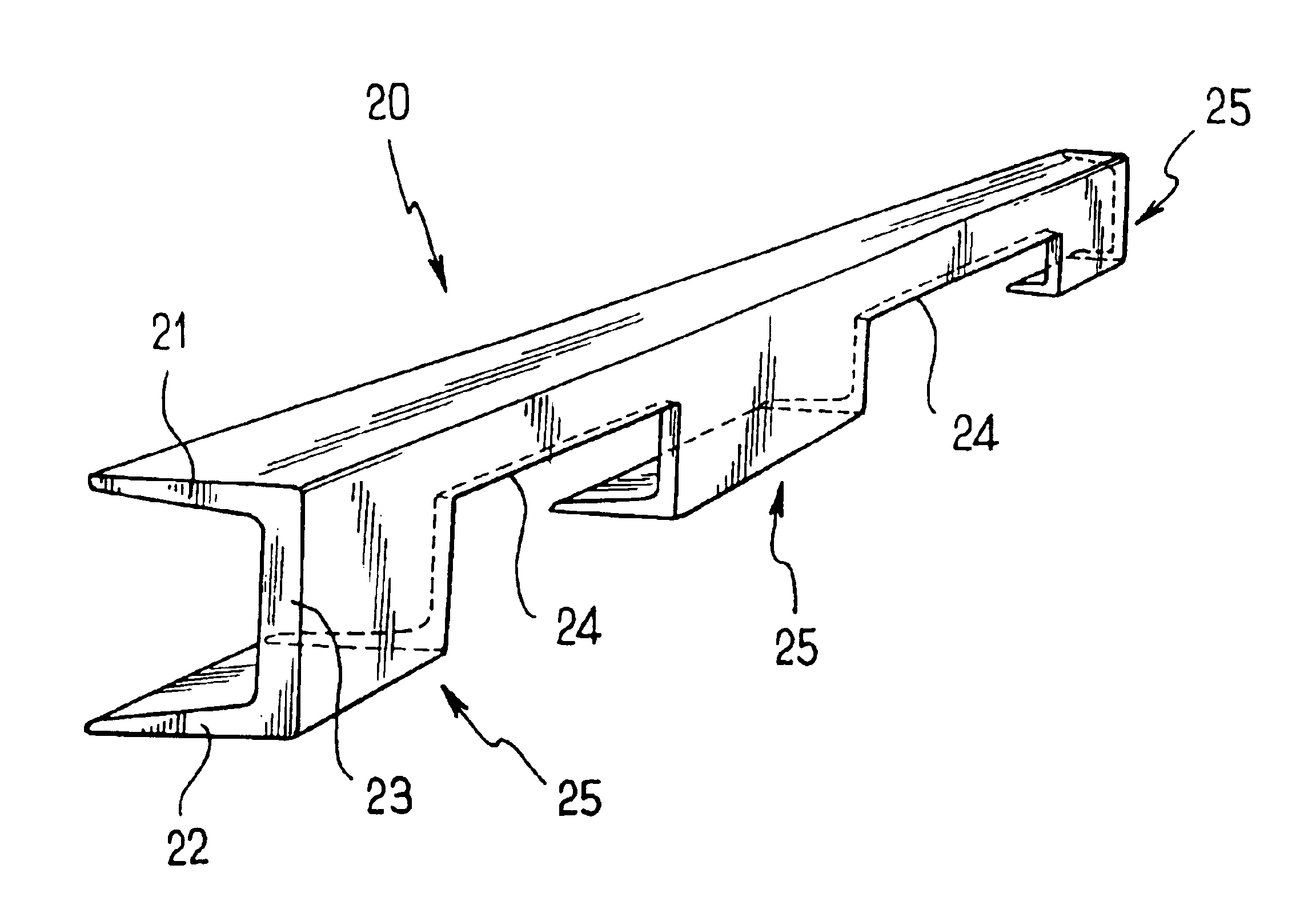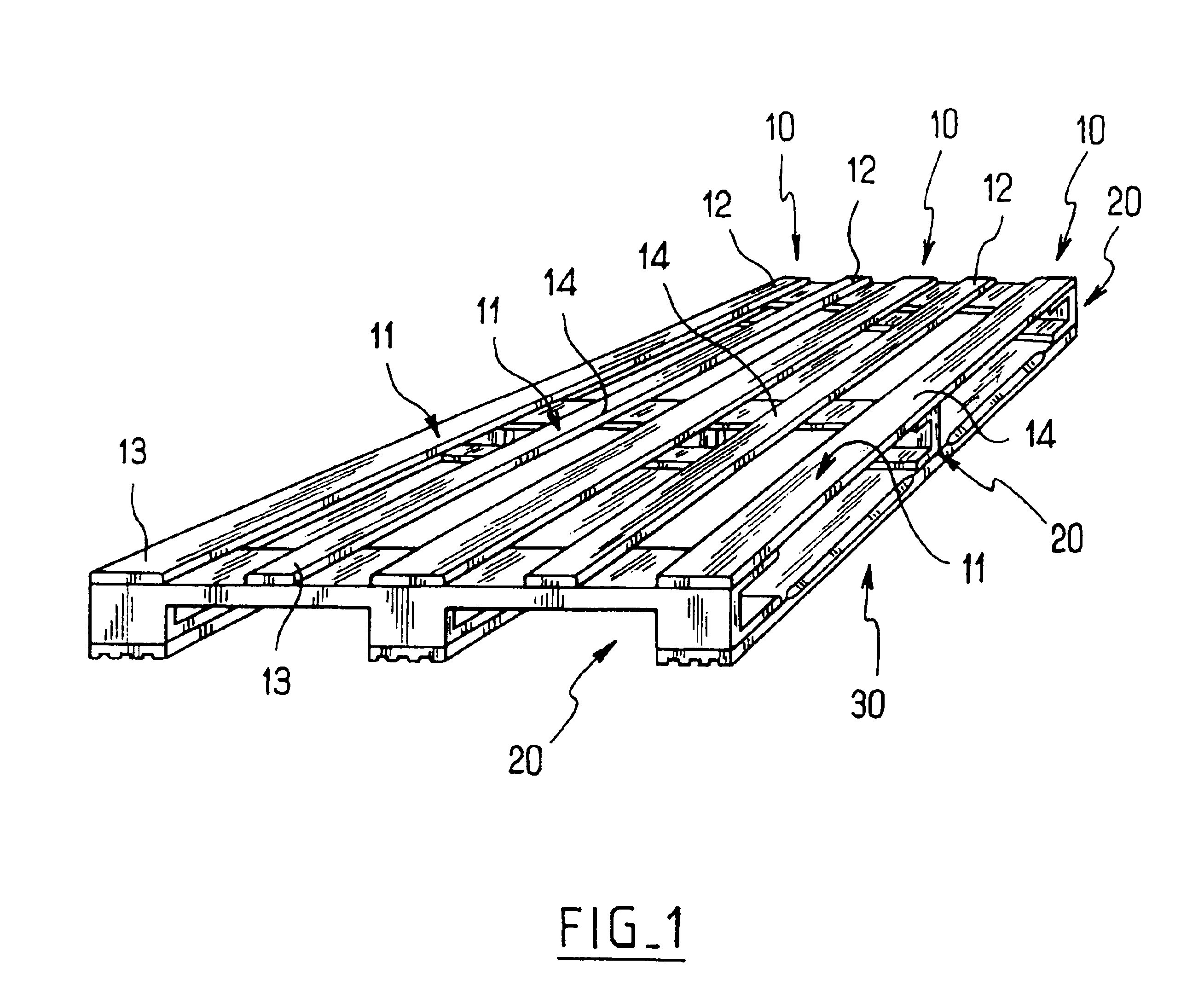Part made of recycled thermoplastic material, a corresponding method of manufacture, and a pallet comprising at least one bar of this type
a technology pallet, which is applied in the field of thermoplastic material, can solve the problems of not being able to rapidly biodegrade, not being able to meet the requirements of dumping such waste, and affecting the quality of recycled thermoplastic material, and achieve good mechanical characteristics
- Summary
- Abstract
- Description
- Claims
- Application Information
AI Technical Summary
Benefits of technology
Problems solved by technology
Method used
Image
Examples
Embodiment Construction
With reference to the figures, the bars in accordance with the invention and given overall references 10, 20, and 30 are made from a thermoplastic material which comprises, by weight, substantially:
55% recycled polyethylene terephthalate;
33% recycled high density polyethylene;
5% compatibility agent; and
7% reinforcing filler.
The composition of the thermoplastic material can vary, but the proportions by weight of the various components preferably lie substantially within the following ranges:
49% to 63.5% for the polyethylene terephthalate;
27% to 36% for the high density polyethylene;
4% to 6% for the compatibility agent; and
5% to 10% for the reinforcing filler.
Adding high density polyethylene makes it possible to obtain a material that is more amorphous than if polyethylene terephthalate were used on its own (since it is highly crystalline). This improves the mechanical strength of the resulting material.
The compatibility agent is referenced LOTADER AX8900 from Elf Atochem, and it is u...
PUM
| Property | Measurement | Unit |
|---|---|---|
| temperature | aaaaa | aaaaa |
| temperature | aaaaa | aaaaa |
| temperature | aaaaa | aaaaa |
Abstract
Description
Claims
Application Information
 Login to View More
Login to View More - R&D
- Intellectual Property
- Life Sciences
- Materials
- Tech Scout
- Unparalleled Data Quality
- Higher Quality Content
- 60% Fewer Hallucinations
Browse by: Latest US Patents, China's latest patents, Technical Efficacy Thesaurus, Application Domain, Technology Topic, Popular Technical Reports.
© 2025 PatSnap. All rights reserved.Legal|Privacy policy|Modern Slavery Act Transparency Statement|Sitemap|About US| Contact US: help@patsnap.com



